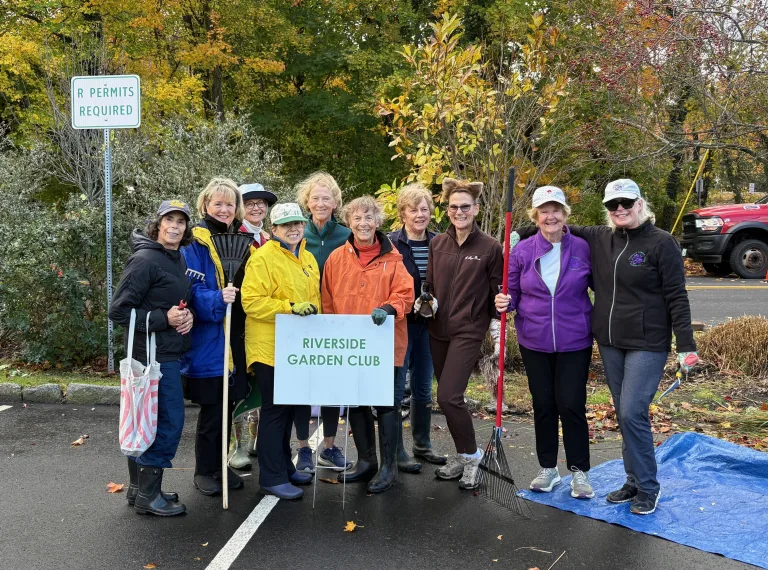
By John R. Conte

Well, its spring and thank goodness it is finally raining. Isn’t the drought over yet? Not so fast… Despite the recent rainy weather and the late snowfall, we are still far behind normal rainfall levels. Conservation Director Denise Savageau, stated in the Selectmen’s letter of March 9th: “We have a deficit of over 14” of rainfall for the past 365 days and are entering the third year of a drought. We really need several months of above average precipitation to get us out drought conditions, refill our reservoirs and recharge the groundwater.” The town in cooperation with Aquarion, is going to be very cautious about easing up water restrictions, especially for landscape use. I’m afraid this is the new normal. Let’s face it, we have long known that conscientious use of water was always the right thing to do. It is no longer a resource we can take for granted. And for those of us with a green thumb, this is really going to hit home. We are going to have to take a very careful look at our landscape practices to find solutions that work.
Well, what to do? We clearly cannot just shut off the water and watch our beloved plants shrivel up and die. Green spaces are important! They play an essential role in human health and wellbeing. They provide spaces for recreation, beauty and restfulness, not to mention the bounty of vegetables. How do we continue to care for our cherished gardens while being smart and conservative? The answer lies in thoughtful design and proper care practices.
Yes, water is and always will be an essential part of plant care and landscape design. But let’s take look at a few ideas that can make all the difference. In a recent follow-up conversation with Denise, we discussed the importance of soil health as a major factor in helping plants cope with dryer conditions and fewer waterings. Plants that have rich loamy soil with a high percentage of organic matter and a deep friable structure will develop deeper roots. And deep roots are much better able to provide for themselves and their leafy counterparts. They are able to tolerate dryer conditions without irrigation. Soils that are overly compacted cannot hold water and do not allow deep root penetration. Shallow roots have no tolerance for even the briefest dry periods and therefore demand constant watering. As a gardener, if you can promote good deep healthy soil conditions, you will naturally reduce a plant’s dependency on artificial watering. This goes for all plants, lawns, shrubs and even trees.
Another key to smart design is the use of the strategy “right plant – right place” which involves working with nature instead of creating landscapes that are out of sync with it. The wrong plant in the wrong place can only survive with constant artificial life support. Properly selected plants, growing in soils that are well suited for their particular needs will thrive with little care.
Take a look at your landscape as a whole and see if you have the right plants in the right places. Are there hydrangeas that droop every hot summer day? Do you have large expanses of lawn where you might instead enjoy a meadow or a wild flower field? Tall grasses, wild flowers, meadows, shrub borders, all once established, require much less or even no artificial watering at all. These strategies provide shade for the soil, cooling it, reducing evaporation and promoting water conservation. Landscape designers today must plan with water in mind. As Denise says, “More gardens less lawn”.
But if you are not able to pursue a new design and simply need ways to maintain your existing landscape without making major changes, keep in mind a few smart gardener’s tips. Slow drip irrigation is far more effective than overhead sprays that miss their targets and allow water to evaporate into the summer heat. Also, try less frequent, but slightly longer drip irrigation cycles to promote deeper soaking so the roots chase the water down into the soil making them stronger and more resilient. Watch for the signs of dryness and even overwatering. Yellow leaves are often a sign of too much water. A lawn that is suffering from drought will usually turn a grayish blue before browning out. This often happens in localized spots created by micro-climates. Often these spots can be treated with a hand-held hose for just a few minutes to bring the area back to health. Always use a spray head so as not to waste water and never lay the hose down and just let it run. Plants can’t take up water that fast so most of it will just run off and go to waste. And work on your soil. Add compost tea and work organic matter in wherever possible. Organic soils hold moisture much more effectively. These are a few gardener’s tricks and tips. Please take heed and be smart. We don’t have to just sit by and watch our beautiful landscapes suffer. We must be smart and work with nature. The reward will be a thriving landscape that is much better to take care of itself and provide you with all of the associated benefits!
John R. Conte is principal and owner of Conte & Conte, LLC, Landscape Architects. John and his wife Kimberly also own Fairfield House & Garden Company, a local home improvement company. Both John and Kim are avid gardeners, active community volunteers and lifelong Greenwich Residents.




